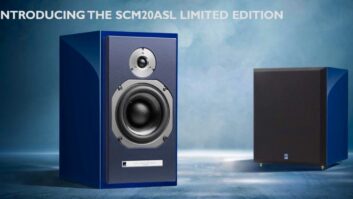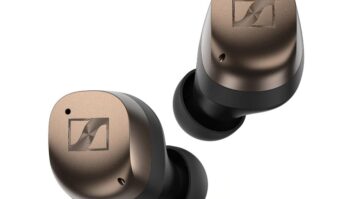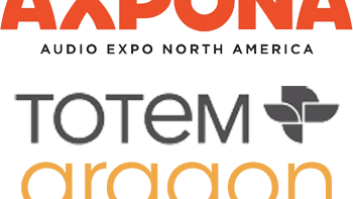Analog broadcasting officially ends Feb. 17, 2009 — and preventing a massive wail from outraged and befuddled consumers will be priority No. 1 for key trade groups, CE manufacturers and retailers on the front lines of this unprecedented transition.
When analog broadcasting stations shut down, millions of TV viewers with older sets who rely only on over-the-air signals to receive programs will need digital-to-analog converter boxes so their tube televisions still function.
The Consumer Electronics Association (CEA) believes 13 million households still receive analog signals over the air. Other estimates say up to 30 million converter boxes may be required.
At International CES at least seven certified converter boxes will be on display from LG (to be sold under the Zenith brand), a pair from Philips (one Magnavox and two Philco branded), one from Sansonic USA (a subsidiary of Sansonic of Jiang Su, China) as well as two from DigitalStream. The latter two are primarily OEM suppliers.
Other brands, including RCA, Samsung and others, have converter boxes working their way through the National Telecommunications and Information Administration (NTIA) certification process and they are expected to ship later in 2008.
Other major manufacturers, including Sony and Panasonic, are passing on the opportunity to sell the boxes for a variety of reasons.
The NTIA, a division of the Commerce Department, is the federal government’s point organization for the digital-to-analog converter box program. As stipulated by federal mandate, beginning in January every household can ask for and receive two $40 coupons that will be applied to the box’s purchase price (around $60, according to executives surveyed by TWICE).
After receiving the cards — which begin shipping on Feb. 17, 2008 — consumers have 90 days to make a purchase. The coupon, which looks like a gift card, can be used only for a certified converter box. It cannot be applied to any other device.
As of early December the NTIA reported more than 100 retailers have been certified including majors such as Best Buy, Circuit City, RadioShack, Wal-Mart, Kmart, Sam’s Club and others. Approximately 14,000 brick-and-mortar locations are now cleared to sell the boxes.
The NTIA offers a hot line number (866-296-1107) and a Web site with information for retailers looking to join.
“We’ve tried, to the best of our ability, to implement the program and to make sure waste, fraud and abuse doesn’t happen,” said Meredith Baker, acting NTIA administrator. The government has budgeted $1.5 billion for the program and has the ability to send out up to 33.5 million $40 coupons.
“LG was proud to be first major manufacturer certified by NTIA. Our box will be sold and marketed under the Zenith brand (DTT900) and will be on display at the LG booth,” said John Taylor, LG’s government relations/corporate communications VP, adding that the unit should sell for about $60 before the coupon.
“It’s a modest supplement given the $40 coupon,” he said, adding that LG see a potential market “on the high side of around 30 million” units.
The Zenith box will offer digital closed captioning, the V-chip and other features besides converting digital signals to analog.
Allan Jason, LG CE marketing VP, said the program will be a challenge for retailers who have to go through the process of signing up for the program and integrating it with their point-of-sale IT systems.
LG may have been the first major to win certification but Digital Stream USA had the first approval by the NTIA. Two models, the DigitalStream D2A1D10 and DigitalStream D2A1D20 ATSC off-air receivers, measure 7.6 inches by 4.1 inches by 1.3 inches, support all 18 ATSC digital television formats, and feature a simple design and interface. Suggested retails are estimated to be $69.99.
At CES DigitalStream plans to unveil a comprehensive retailer/partner and customer support plan for the converters, including telephone technical support for consumers.
Samsung also expects to have a converter available for retailers in 2008, according to Richard Long, Samsung digital set-top-box group senior manager. “We’re being a little more conservative about the total number and are estimating 15 million over the course of the life of the product which ends June, 30, 2009.”
Samsung’s converter box will carry a $59.99 suggested retail but intangibles could affect that, Long said.
In 1999 RCA introduced the DTC-100, a $700 over-the-air high-def receiver. Nine years later the new DTA800 (awaiting NTIA certification) is expected to sell for $60 to $65 and be available early in 2008.
According to a spokesperson, the box will be the size of VHS tape, and will come with a big-button remote that works with 30 million RCA TVs in the market. “We think the market potential is 20 million but how many will buy a new TV instead or box if they can get a digital TV under $150?”
Best Buy senior VP and GM Mike Vitelli said his company was in the middle of the converter-box-program software-integration process. Vitelli said his company would start off with a pilot program in mid January to see how well the system works.
“If there are no problems we can quickly roll it out nationwide,” he said, adding Best Buy will carry a selection of converter boxes for its customers.
When asked how big he thought the market would be, he said, “Nobody knows and those that profess to know don’t know either.”
He pointed out there’s no history to review since there’s never been a CE product introduced with a limited life potential. “That said we’re going to buy millions of them.”
Vitelli said Best Buy will actively educate consumers about the cutoff with an in-store TV network, signage in stores and educating sales associates to spread the message. At the local level, they’ll work closely with community groups to get the word out to those that need it the most.
Circuit City, meanwhile, is distributing pamphlets on the DTV Transition in stores nationwide, and is placing advisory information in ad supplements, incorporating reminders and messages into the closed circuit videos that run on TVs in stores, posting signs and informing customers about the transition on the Circuit City Web site.
Retailers should be prepared for the month ahead.
“We see two blips in the sales curve,” Best Buy’s Vitelli warns. “There will be a rush of people early to get their boxes, a 10-month lull, and then we’ll see a real Black Friday on Feb. 17, 2009.”.













